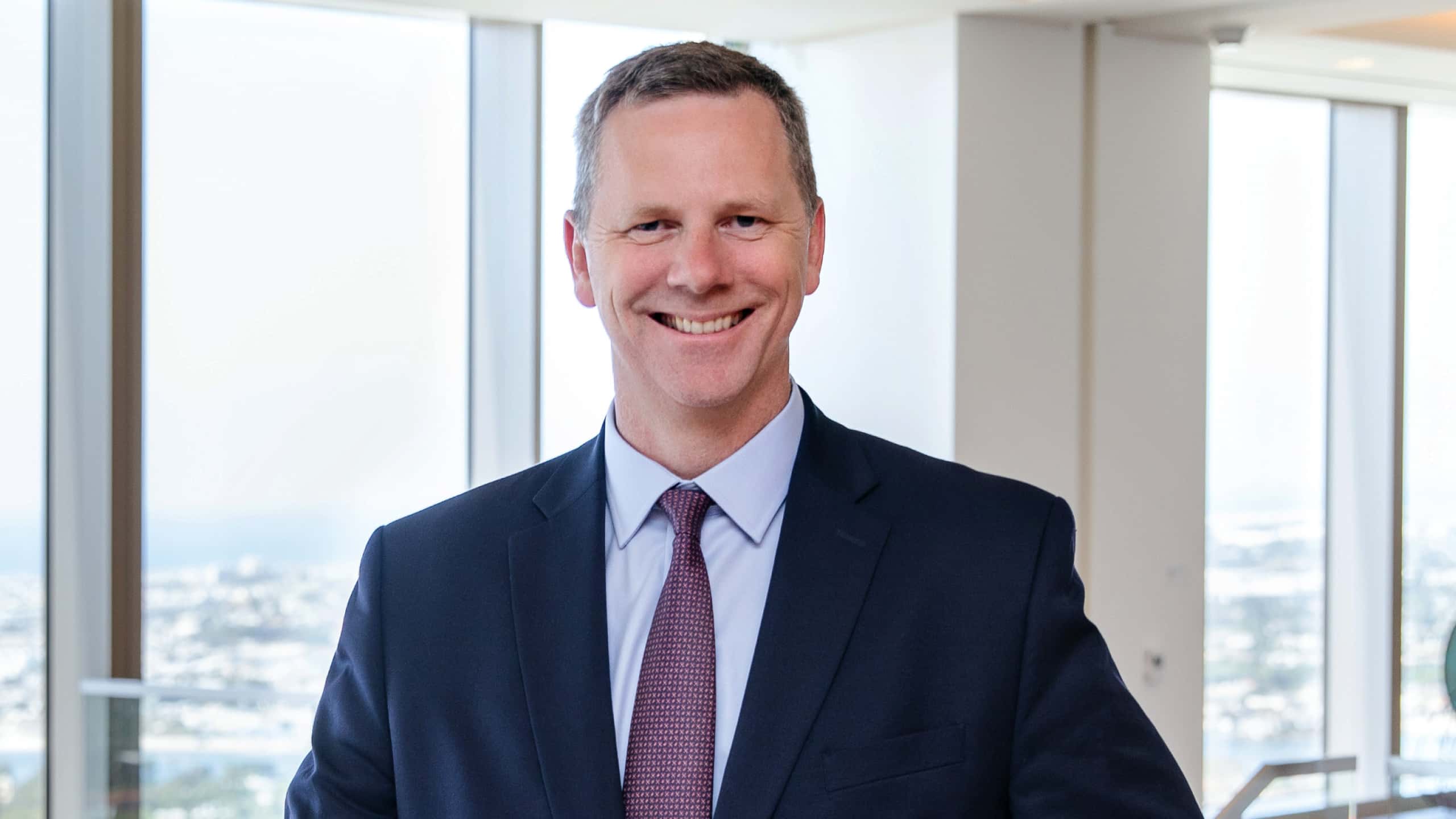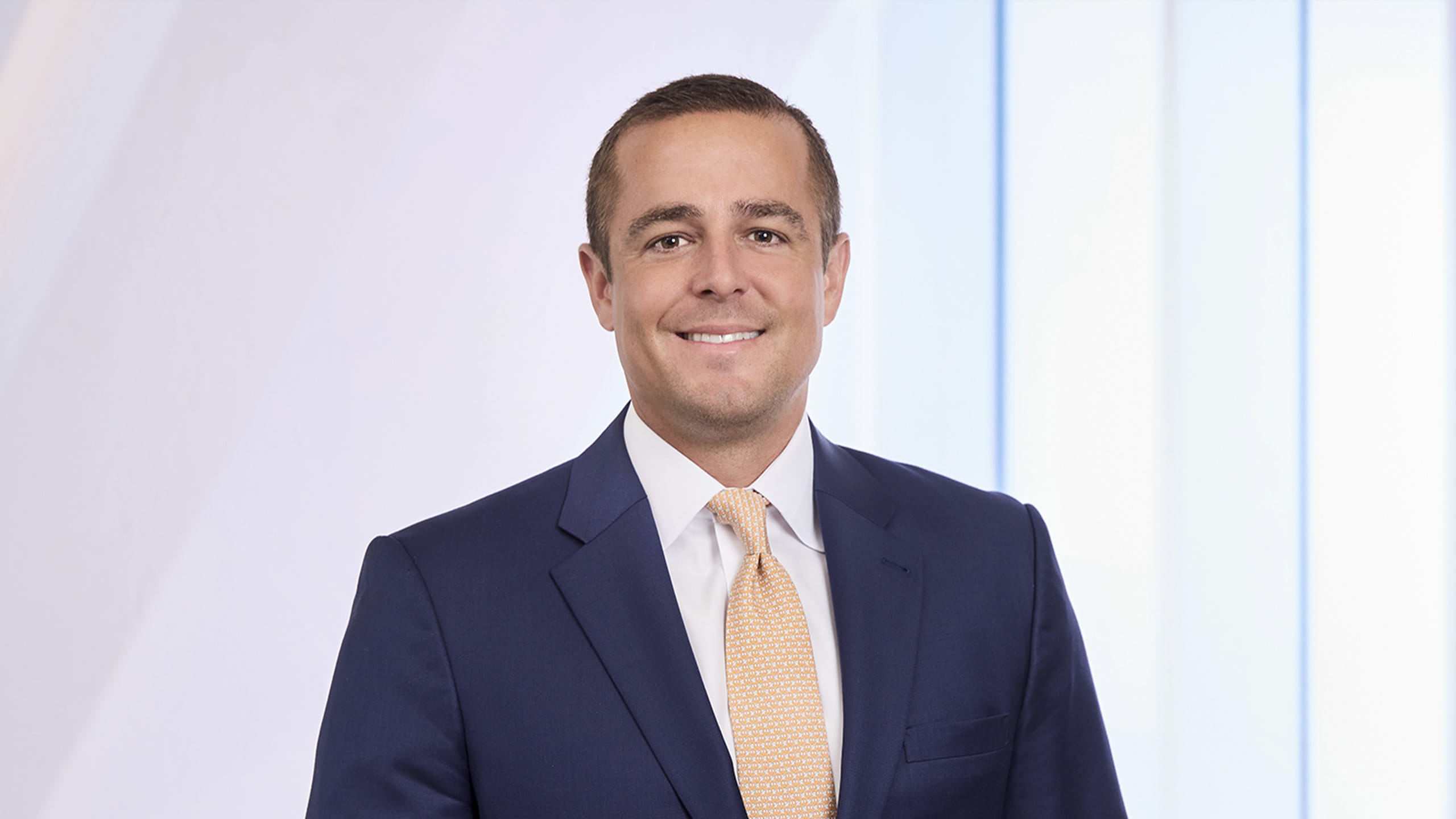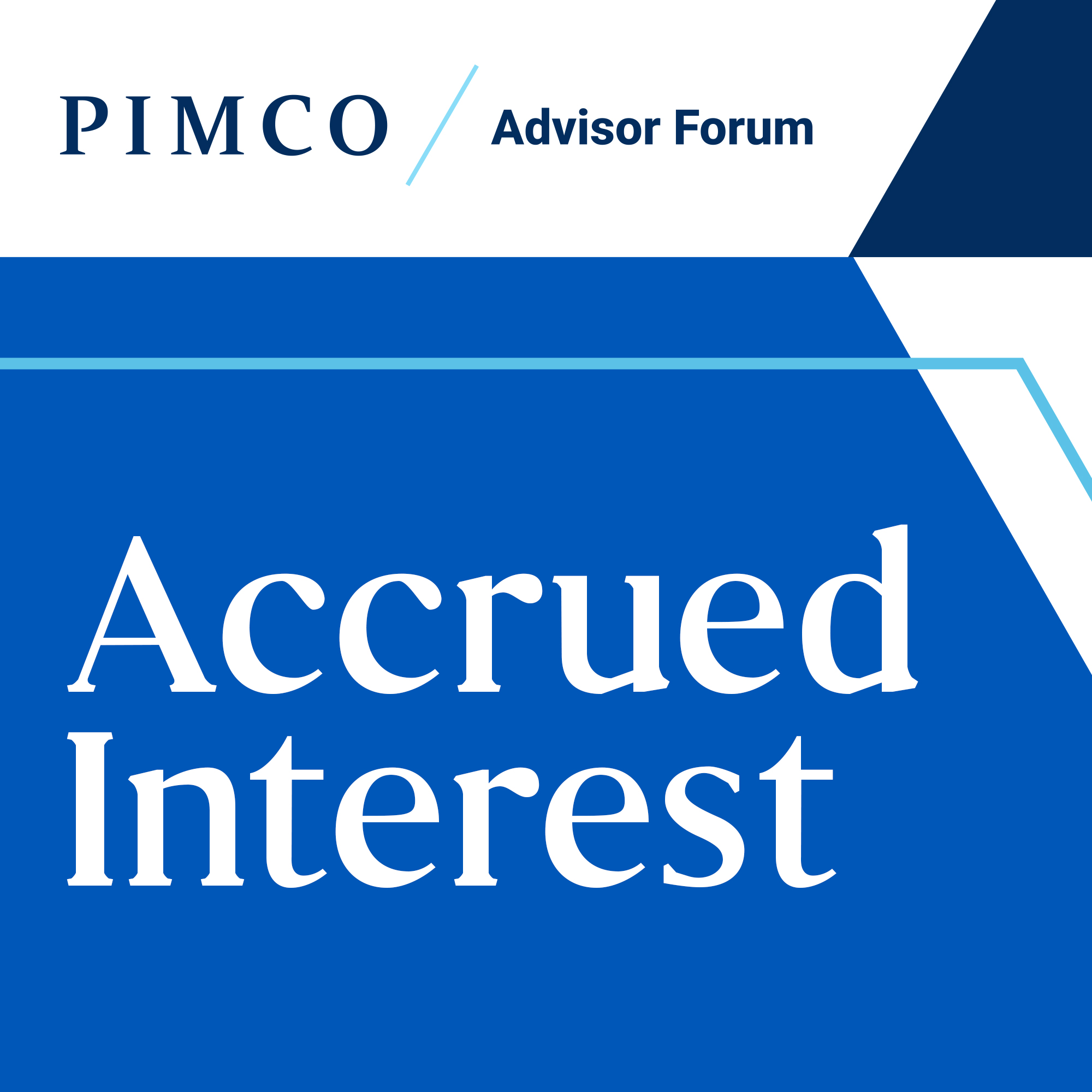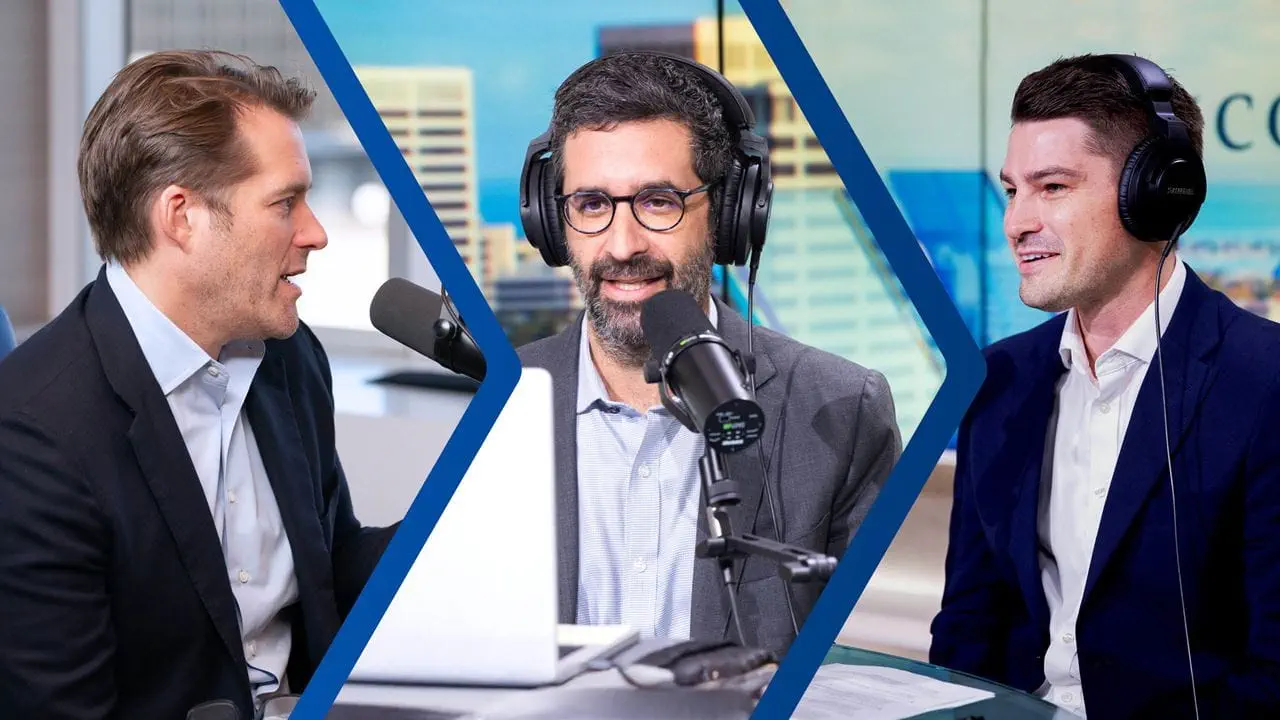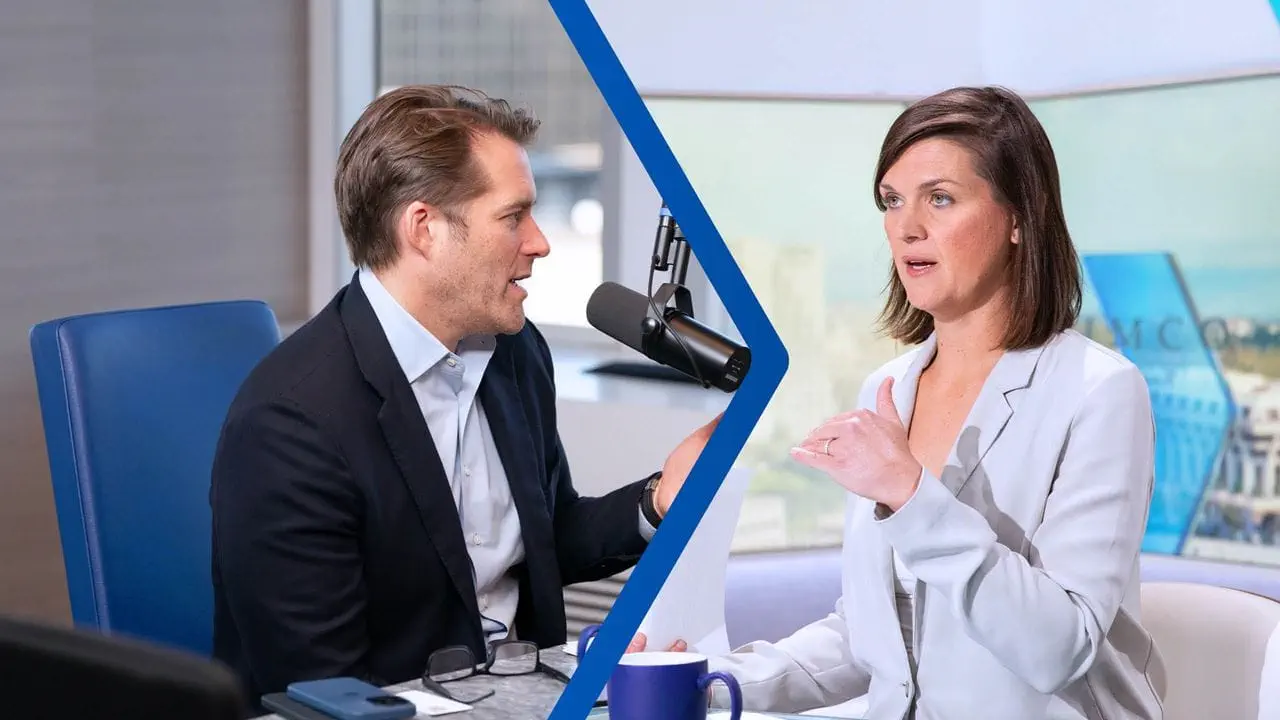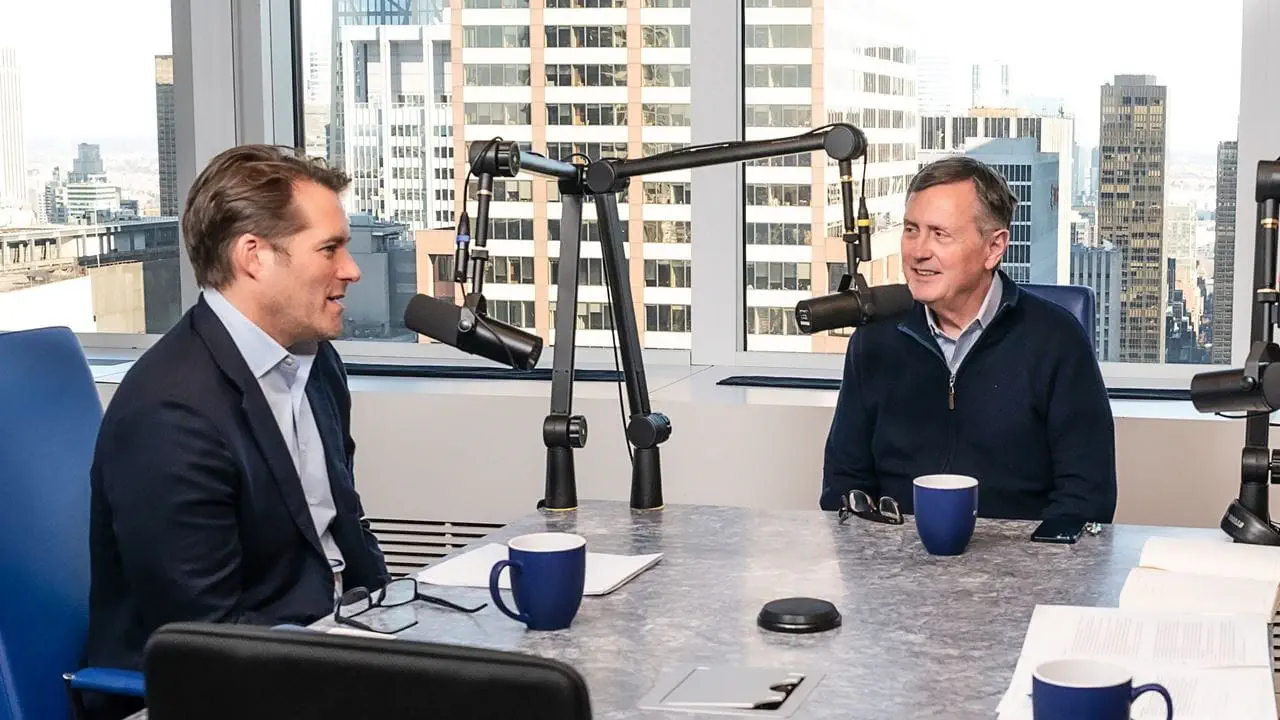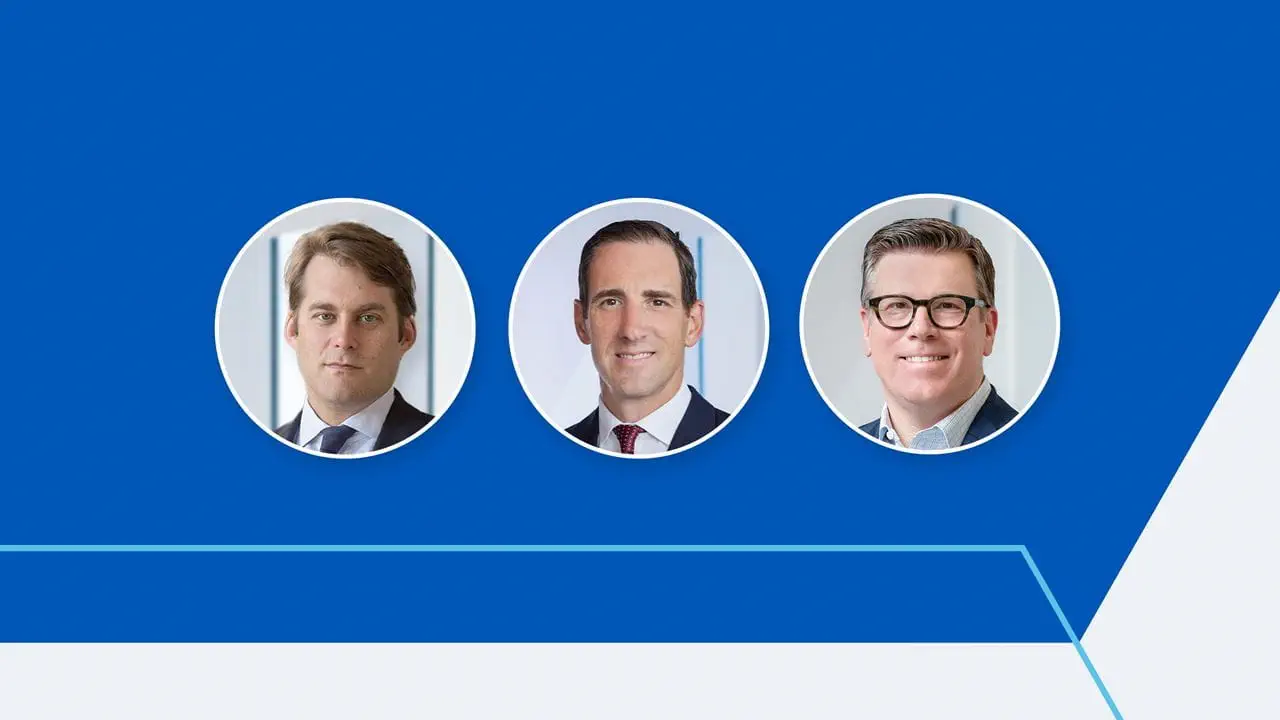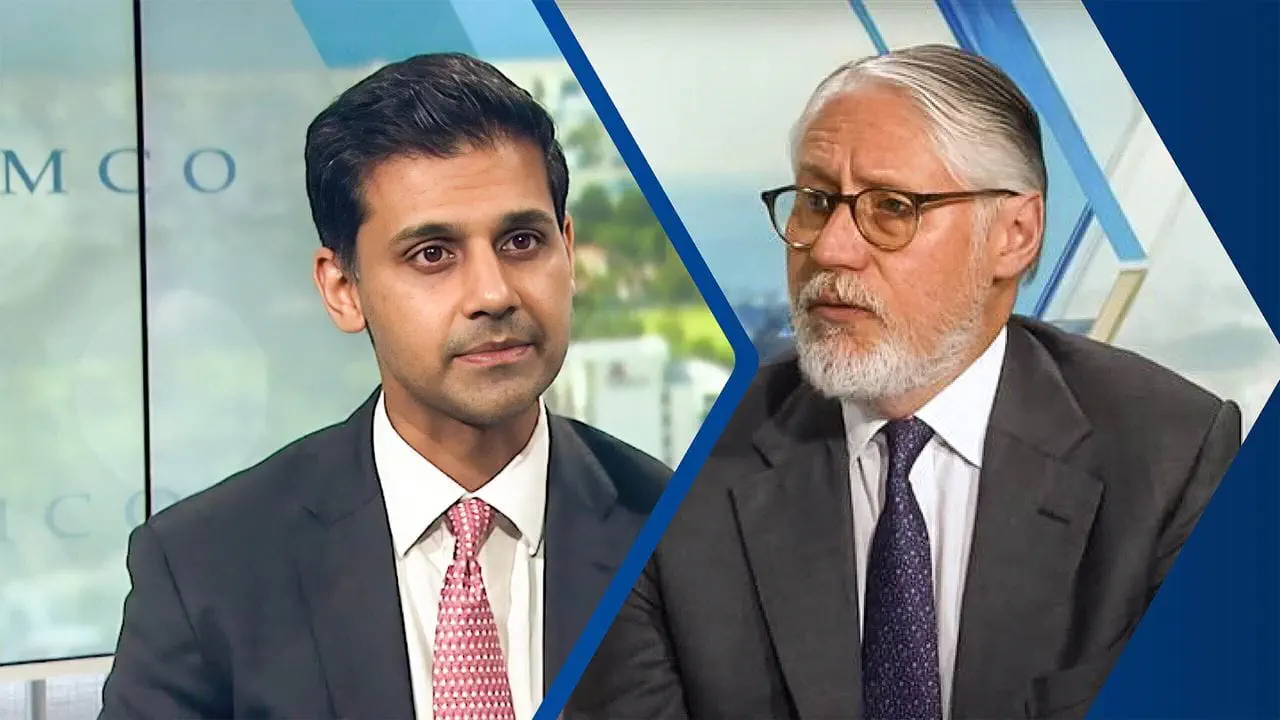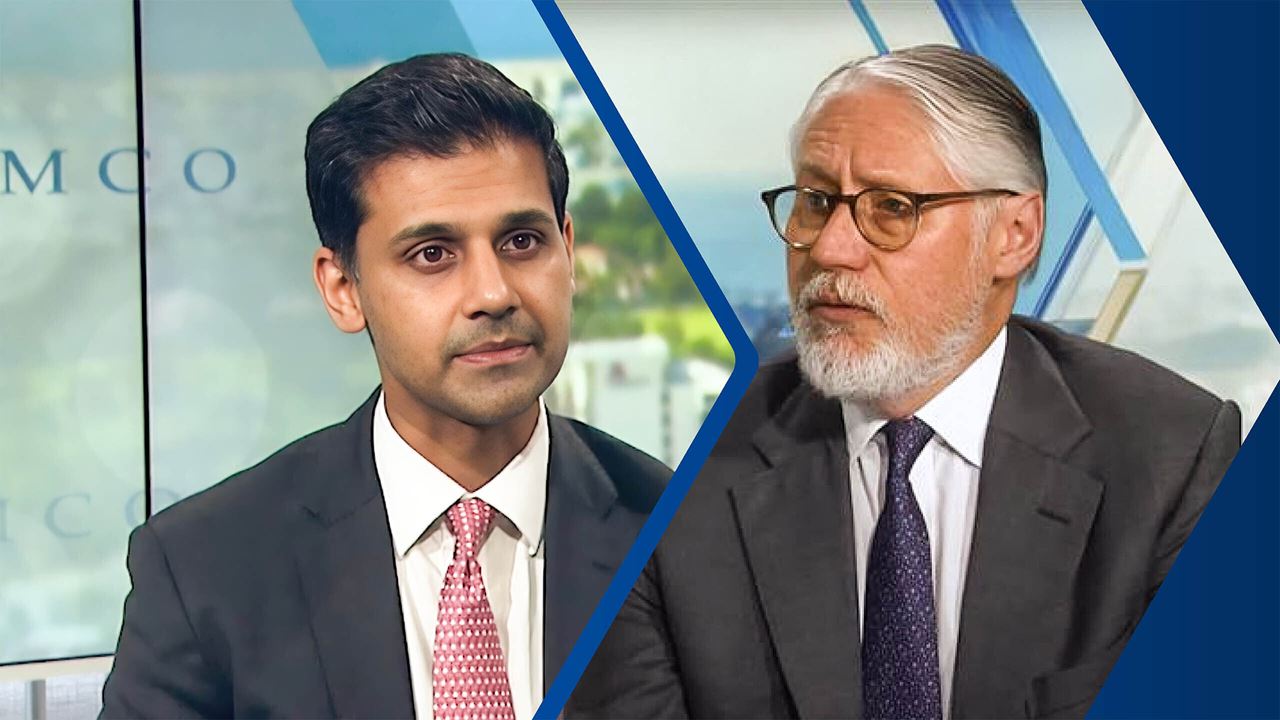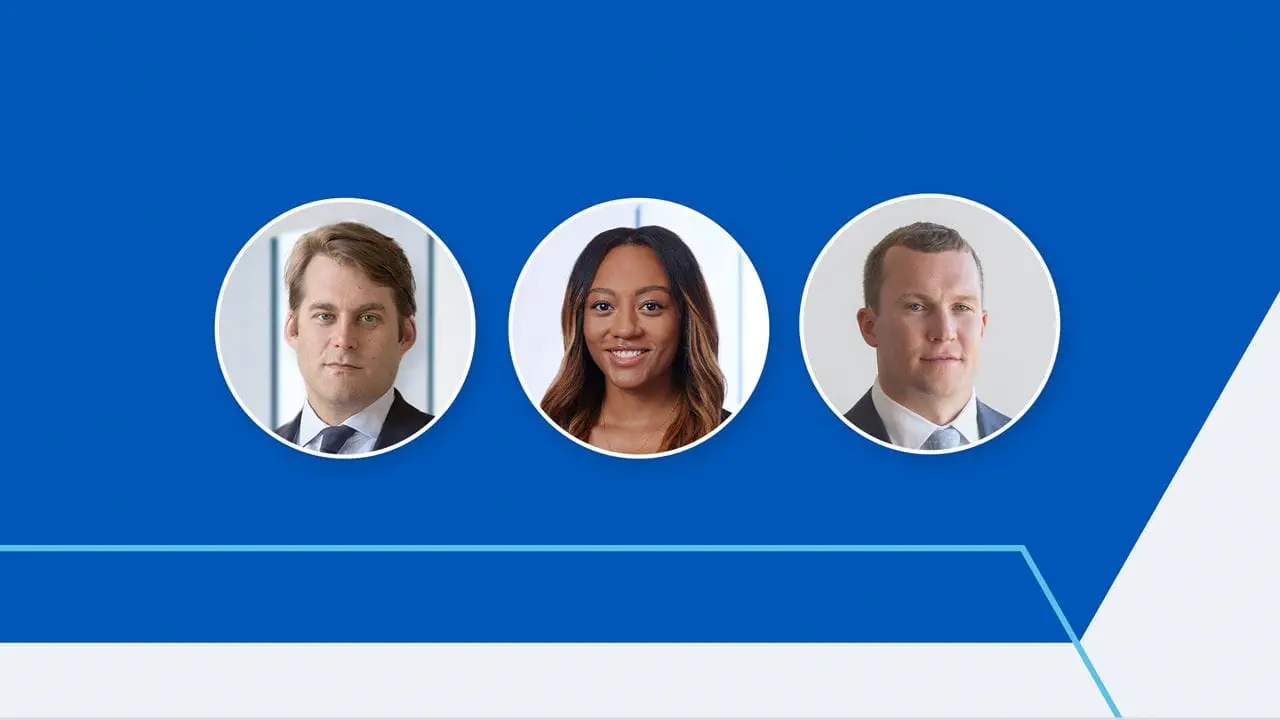Please stay tuned after the conclusion of the podcast for additional important information.
GREG HALL: Hi everybody. Welcome to another episode of Accrued Interest PIMCO’s podcast, dedicated to serving financial advisors and their clients. I'm Greg Hall. I head the US Wealth Management business for PIMCO, and I'll be your host for today's episode. I'm excited about this. We're going to take a break from macroeconomics or at least a little bit of a break from macroeconomics, which has been the topic of our last few pods.
And we're going to really delve into the world of private credit and specifically asset-based finance. To that end, I'm joined today by my partner and friend, Kris Kraus. Kris is a managing director. He co-heads the asset-based finance business at PIMCO and our private strategies group. He's based in London, but he is joining us here through the miracle of modern technology. Hi, Kris. Welcome.
KRIS KRAUS: Thank you. Good to be here.
GREG HALL: I hope you're well. Thanks for making time for this. You've had your coffee and you're ready to go unlike some of us.
KRIS KRAUS: Ready to go.
GREG HALL: Namely Christian Clayton, Christian is an EVP here at PIMCO. He's in our product strategy group. He's focused on exactly this space alternative and private credit. And more importantly, Christian spends virtually all of his time focused on the wealth management business. He and I work very closely together in that regard.
He knows a lot of advisors. He's constantly out and about speaking to advisors. And, Christian today, you kind of play the role that we've had our account managers play in previous podcasts, where you're going to be the voice and the representative for advisors as we make our way through the conversation today. Welcome.
CHRISTIAN CLAYTON: Thank you. Glad to be here, and happy to play that role. It's you know, interfacing with financial advisors is probably the best part of my job, so hope I can represent them well today. Well,
GREG HALL: You're, you're already doing a good job. I know it's pretty early out there in Newport Beach, so thanks for coming to the office early and hopping on, on the line with us. Let me, you know, instead of using my own words Kris, if you don't mind, could you tell us a little bit about yourself and how you grew up in the industry, how you got to PIMCO?
KRIS KRAUS: Oh, wow. I started in the business a number of years ago on the sell side structuring, packaging, a lot of risks that is relevant in the markets that we're dealing with today. Asset based finance, corporate credit spent most of my career on the, on the sell side, and then made the move to PIMCO back in 2010. And it's been 15 years of an exciting journey since then.
GREG HALL: You've, you've had a bank theme, I think, throughout your career, right? I think that, you know, and, and, and, and correct me if I'm wrong, but obviously you know, growing up on the sell side, packaging risk, helping to distribute it out to its eventual holders. And then I would imagine, you know, once you got to PIMCO in the wake of the financial crisis, a lot of the opportunities that you were focused on sort of derived from banks unburdening themselves of different forms of risk and credit.
KRIS KRAUS: That's right. I mean, if you go back to, to 2010, right? Everyone's sort of picking up the pieces from the GFC, the regulatory environments you know, evolving. And the role that I had at PIMCO at that point in time was really helping banks as our clients and, and regulators sovereign wealth funds and others as clients, trying to really unpack what was, what was on the balance sheet for a lot of these institutions.
And it's remarkable, the, the amount of complexity embedded in how banks were, were positioning risk whether in cash form, derivative form, combinations of the two the breadth of, of asset types. They were carrying on balance sheet from, you know, obviously US residential credit to, you know, different parts of corporate credit around the world, emerging markets, et cetera.
GREG HALL: Real estate certainly, right?
KRIS KRAUS: Real estate, certainly. Yeah. Yeah. You know, bank balance sheets then, and, and still now, but I think then were, were especially complex you know, given the, the freedom that, you know, I think banks were able to, to, to run with during that period of time. And then obviously there was, there was the GFC and, and it was, it was a good time to, to switch sides and, and really help clients and, and position PIMCO portfolios to, to take advantage of some of that.
GREG HALL: I, I wanted to, I kind of wanted to start, you know, on, on the bank theme, because, you know, today we're talking about private credit. We're going to focus in ultimately on asset based finance, which we'll define over the course of the conversation. But it seems to me that sort of the presence or absence, private credit in, in, in some form has existed for a really long time, right?
There, there's always been sources of credit outside the banking system, non-bank lenders, but they were peripheral, you know you know, prior to the financial crisis. And then as we, as we think about since then, and, and really kind of your time at PIMCO, Kris, would you, would you sort of agree with the thought that, you know, the presence or absence of banks in these markets has really kind of defined the private credit opportunity?
KRIS KRAUS: I think that's, I think that's entirely right. I think that coming outta GFC, you know, what was clear from, from regulators, and not just in the United States, but you know, here in the UK where I'm today, continental Europe elsewhere, was a need to really de-risk their respective banking systems. And well, they each went about it in certain instances in their own way. You know, it, it has, I'd say for the most part, been coordinated. And here we are 15 years later talking about, you know, Basel III Endgame and what may be included, what may not be included, you ultimately in the day. But if, if I go back to, you know, pre 2010 and, and being on the sell side, you know, banks were, were the epicenter of, of where corporates went to get credits where Main Street went to get credit.
And, and coming out of that period of time with the changes that we were seeing there was, there was, you know, somebody needed in, in certain ways to fill that gap, right? I think about some of the things that we were doing, you know, back then at PIMCO to, to step in and provide capital to certain, you know, markets where historically banks had been dominant.
We were doing it more out of necessity at that point in time. It wasn't, you know, something that we necessarily thought of as being, hold on, this is incredibly novel. I can't wait to see where this goes. It was more of if banks aren't able to provide, you know, risks that we find to be attractive, here's a way in which we can do it more on a direct basis. And, you know, that was the beginning of, of a trend.
That's obviously, you know, grown quite a bit, you know, since that period of time. And, and the banks have, you know, for, for quite a number of years, you know, been fighting that, that regulatory and, and, and accounting battle too to try and more effectively compete, you know, in some of these markets. But I think too, there's been a shift in the narrative around banks.
And we even had, you know, a leading bank, CEO you know, presenting to us last week at, at our annual secular forum, you know, talking about ways in which banks can, can partner with firms such as PIMCO and the wider private credit ecosystem in a way that's, that's complimentary to each in the banking regulatory environment that, that we live in today. And so, you know, with that is sort of the destination where we're at today. And going back it's, you know, it's not a surprise. Somebody needed to step in and provide credit to both the corporate segments within the economy as well as, as well as on the main street side. And that's…
GREG HALL: Sorry to, sorry to jump in. Yeah. Well, one, I just wanted to the, the secular forum is an event we hold once each year. It's part of our investment forum series. It's an internal meeting at PIMCO where the whole firm comes together to think about the investment horizon. We do it, we do it four times. Three of them have about a six month to one year time horizon. The secular is kind of special because that's where we think about five year trends and 10 year trends.
And, and we do have, we invite in you know, experts like the, the CEO you just mentioned, Kris, where we can talk about structure of markets over a really long period of time. So just, just to give people a sense of, of what you were referring to there. And then the other thing that, that you said that I think is really, is really key is, is, and, and, and you said it so nonchalantly, but I think it's really important that when, when we as a firm and others began to step in on behalf of banks, because there was this capital vacuum, it didn't feel novel.
It, it didn't feel like the creation of a new asset class. It felt like what you do when you have opportunistic capital available, and there's a, a gap for that capital in the market, right?
KRIS KRAUS: That, that's right. And, and, you know, at that point in time, if I go back, you know, it was, you know, I recall the meetings, right, that you were having a changing regulatory environment. The requirements of originators in the mortgage space, just to use that as an example, were shifting. And, you know, as a result, you at the time didn't really have anyone willing to sort of step in and be that, be that lender.
And, you know, for us, obviously residential credit's an important part of our, you know, investment opportunity set has been for, for, for a long time. It was almost outta necessity. But also the opportunity that we saw, it was like, wait a second, if, if the market's broken, is there an opportunity for us to step in, use client capital to take advantage of what seems like a great, great opportunity because no one else is doing this.
And, and it was the right time. And so we're able to, to acquire significant volumes, huge pickup to where we thought fair value was, and, you know, wasn't, you know, we were able to do that for quite some time before I think other people picked up on it. But you know, I think it just goes back to your point, Greg, I think at the time we didn't think it was, it was this, you know, massive invention. It was more of just, we need to crack on and get going, and this is how we're going to do it.
And it's something that we've repeated many, many, many times since then where we've seen markets, you know, structurally just not behave in a very efficient manner that creates the opportunity for us to, to capture a lot of alpha for clients. So I think it's something that we just, you know, it's, it's, it's part of how the teams operate. And, and that approach, you know, we applied to, to a lot of different markets, not just, you know, residential credit and the example I was giving.
GREG HALL: So how, and, and maybe this is a chance, Christian for you to, to, to jump in as well, but like, how did we get from something, as matter of fact is what Kris just described. There was a, a capital vacuum that banks had left in the wake of the crisis. Groups like PIMCO did what we always do, which is to, to find creative ways to step in and fill a capital void. How did we get from there to the quote unquote private credit industry and, and this, this phenomenon that is, you know, sweeping the allocation strategies of institutional and, and, and, and individual investors respectively?
CHRISTIAN CLAYTON: Yeah, look, I think it was a combination of a couple things. One, a huge need for income in a low rate world prior to the rate hike cycle we saw in 2022 private credit generally was offering yields and spreads far in excess of what you get in public markets. And that created an opportunity for investors to step in and, and generate more return in their portfolio. And I think that was really the biggest, you know, kind of factor that drove the adoption within the wealth space.
And then it was the perfect storm thereafter where you think about 2022, 2023 public markets didn't always do what investors wanted. Given the duration impact in, in 2022 as the Fed was hiking rates at the same time, private credit was very resilient. You know, having a floating rate asset class in a period of rising rates was a positive for investors. And so you had this, this combination of a market opportunity and a client need, and it was kind of the perfect storm to see widespread adoption of the asset class.
GREG HALL: And it, and it, and that adoption though, I think was, was relatively limited in terms of strategy, right? There were, there were areas of the bank balance sheet that you know, that became the kind of the seed crystal for this industry and, and largely focused, I think probably on the leveraged finance desk, is that right?
CHRISTIAN CLAYTON: Yeah, that's right. Direct lending, floating rate, corporate loans have, have been really within the private credit space, the end all be all of most advisors allocations. And I think a lot of the reason for that is it's done incredibly well in that period. You've had rates moving higher that's been good for income, you've had very low volatility, even as public markets sold off.
It's really delivered every outcome that a financial advisor wants. And you think about 2022 and 2023 when I think there were a lot of hard conversations with clients about what was going on in their fixed income portfolio. Private credit generally didn't do that. And so for advisors, it was exactly what you want in an allocation, something that's resilient when other parts of your portfolio are selling off.
GREG HALL: Yeah. And I want to, I want to, I want to make sure we spend some time sort of just thinking about the underlying macro conditions right there. 'cause, because what, what you guys are describing is we go from this kind of dislocation capital gap where you, you earn excess return by virtue of being scarce capital, you know, in a world that, that needs it to what you were describing Christian, more of a macro driven thesis where you're producing yield in a zero rate environment and then you've got floating rate or no duration, you know, type exposures in a rising rate environment.
And so let, let's not lose sight over the course of this conversation of the macro inputs to what has made private credit successful and, and, and let's return to kind of where we are in the cycle today. But I, I do think it's kind of interesting 'cause I think, you know, still today when, when the average person in our industry hears private credit, they immediately, they, it's synonymous with direct lending.
It's synonymous with what we call sponsor finance, which is a, a direct lender finds a private equity sponsor who's looking to buy a business and they provide, you know, some form of flexible financing, usually quickly customized maybe with some bells and whistles that the banks wouldn't be willing to do. But I, you know, I think those are, are, are really kind of considered one and the same at this point.
And I think Kris is, is sort of here to tell us that maybe that aperture's a little too narrow and, and there's other parts of private credit that have emerged and are emerging. And so Kris, maybe, maybe I can get you to kind of help, help us like widen the lens here and think about, you know the prevalence of, of direct lending, but also, you know, what's now coming to the fore in your world.
KRIS KRAUS: Yeah, you're right. I mean, direct lending was, was sort of the only thing that was in the world of, of private credit for, for quite a while. You know, up until, I'd say, you know, several years ago when we began having conversations with a lot of institutional clients who, when looking at their overall all to allocations, private strategies, allocations were, were saying to us at least at that point in time, look, I'm pretty full on my commercial real estate allocations. I'm pretty full on my direct lending allocations.
But you know, I know there's, you know, a very large target addressable market in what you PIMCO do, do well and been focused on for, for a number of years. Can you give us some thoughts around how you could build, you know, a private strategy around those assets and that, you know, jumping forward has led to, you know, what, what the market today refers to as asset based finance ABF, and, and that is, you know, more and more being included in that in private credit umbrella. Right?
GREG HALL: And what, what is that, Kris? Talk, talk to us about the, the, what, what falls into the category of asset-based finance.
KRIS KRAUS: So it's a lot of that, you know, main street type risk that I mentioned, you know, before. The world of residential credit, right? The United States is a, is a very large target addressable market for us in that, in that area, as, as is the UK and the rest, the rest of the world. The world of, of aviation finance, right? We all fly on airplanes. That certainly is, is in scope, auto finance, right? Auto loans that people take out drive, get to work get around equipment finance.
You may think about, you know, the fleets of trucks that help deliver, you know, goods to us each morning, you know, across a given city someone's providing the financing for that fleet of trucks, or you walk by a construction site, you may see a fair amount of what we call in the industry, you know, sort of yellow metal someone's financing that.
To allow, to allow that site to, to deliver the product whether that's an office building or multifamily, what have you. So a lot of it is, is things that we sort of see and touch in our, in our, in our daily lives, right? We get up, there's a, there's a roof over our head, so there's, there's probably a mortgage there. You get in your car, you drive to work, you may go on a business trip or take a, take a vacation, right? You're flying, you may listen to music that's in scope as we think about the wider opportunity set.
GREG HALL: Those are music royalties. Royalties,
KRIS KRAUS: Music royalties. Yeah, that's right. So it's there is quite a bit that's out there and that, that ecosystem, when you sort of add it all up by our estimates is at least $20 trillion, which is many times the size of the direct lending, you know, opportunity set. And I think it's, it's, it's been one of the reasons why you've seen, you know, that sort of expansion, if you will. Back to your comment about sort of the definition of private credit. I think that's why you've seen more and more parties asset managers look to come into this space.
GREG HALL: How do you then think about not to inject cynicism into this, but how do you then think about risk management in the terms of, if the banks don't want to hold it, why do we?
KRIS KRAUS: It's a good question. And, and clients will say, wait a second, why are you buying what they're selling? The fact is that PIMCO, at least we do an enormous amount of, of underwriting, right? The discipline, and I, I knew this years before I ever even joined PIMCO, right? Being on the other side of PIMCO and trading bonds in the marketplace where you, where you saw the firm operate, and now, you know, obviously having spent 15 years inside the organization, you know, you have front row seat to the, to the underwriting process to the discipline that that goes into each underwriting decision. And we can't just, you know, blindly sign up to, to what someone else is selling. And I think it, it comes through in, you know, obviously what I was talking about in terms of just credit underwriting, but in terms of how we structure, you know, some of these arrangements where, you know, we're looking to buy the production, let's call it, of, of a bank or a non-bank financial institution that's operating in these markets.
We have to take an independent view around whether or not that's a good investment opportunity for our clients, and therefore, you know, we don't look to pre-commit, if you will, to those types of forward flow arrangements, right? We'll, we'll re-underwrite everything that's put in front of us. And the decision could very well be, look, it's a pass for us, or it's a no for the following reasons. And that's just how you, you, you've got to go about it. So, but it comes back to that just discipline at, at the underwriting side.
GREG HALL: I want to ask a, a little bit of a, a, a related question. 'cause I, I mean, I think, I think these asset classes are, are super interesting. They're really granular, they're all experts markets, which I think is, is really interesting.
The, I would imagine the entry barriers to getting smart in US residential credit, aviation finance, equipment finance you know, I would, I would imagine it is relative to the direct lending model, which was the same form of credit, kind of over and over and over again, not, not to diminish, you know, the underwriting, you know, done in that space, but this must, the entry barriers here must be pretty considerable, Kris. Talk, talk, talk to us about, you know, how you've gotten comfortable with the team's capabilities to execute across all these different areas.
KRIS KRAUS: Yeah. The barriers to entry, you know, I think are high. When you think about US residential credit, you think about consumer aviation, as you mentioned you need an enormous amount of, of data. And how you sort that data I think is really important. There are sort of the, on the runways of doing it, there are the off the runways, the unconventional ways of doing it where you're really trying to understand what's happening in a, in a, you know, micro market sort of down to the zip code or postal code level.
You know, similarly on the consumer, enormous amounts of data that we're able to, to aggregate utilize, right? We have a very large public markets presence in, in these markets too, where there's, you know, a lot of data that we, we can see and ascertain there and feed into the models that we use and have developed.
And that's, you know, analytics is the, is the second big important leg to doing this, doing this well, having those tools making the necessary investments in those people. And it allows you to not only pinpoint where you want to be in these markets but it also allows you to move very quickly. And sometimes the opportunities that we see you do need to move quickly, right?
You have a, a large holder that calls and asks if you can, if you can potentially take down a large transaction. We like getting those calls, phone calls, that's, you know, PIMCO's, we, we've, you know, given our presence in these markets, those are the calls that you want to get. And, and being able to move fast can, can make a difference in terms of getting a really good trade. Or, or having to, you go into a competitive situation.
That's a big part of it. The team, in terms of composition, you know, we always think about making certain, we have subject matter experts in the areas in which we're investing. You want to have people who really understand these markets who have the relationships in these markets. They understand the nuances of them. They understand the origination how to do it well.
And sometimes too, markets may get, markets could be expensive. And, and, you know, the approach we've taken, you know, within ABF and, and many other strategies is making certain you have an ability to pivot, right? And, and making certain that, that members of the team, right? When something's screening, screening cheap, you know, we want to obviously be allocating the necessary resources to take advantage of it when something's screening, you know, rich or expensive.
Let's continue to monitor it, understand what's driving that 'cause markets can shift, you know, as well. And then we want to be well positioned, but a lot of it boils down to making certain we can pivot across that team.
CHRISTIAN CLAYTON: Greg, maybe I can bring in another lens here. You know, you asked Kris about, about why PIMCO buys this type of risk and, and why we like it. I think there's an important lens on the client side of why clients should think about asset-based finance as an opportunity set in their private credit allocation. And, you know, when you think about the underlying asset class, it's quite different from, from direct lending, from corporate credit, where you typically have, you know, hard asset backing, which should mitigate some risk in a more stressed or, or risk off type of environment.
You have very diversified collateral pools where I think in the direct lending space, you're seeing more and more overlap across that space is becoming much more of kind of a loosely syndicated market in asset-based lending. You know, one specific opportunity might have hundreds or thousands of underlying borrowers within it, so you get inherent diversification within the asset class.
And then the last point is resilient income and accelerated cash flows. You think about a typical corporate loan where you're getting your coupon payments along the way and a balloon payment at the end in asset-based finance, you're getting principal and interest along the way, accelerates your cash flow profile. And why, why is that important to an advisor? Why should that be important? It gives PIMCO the ability to reinvest in the time of volatility like we're seeing today, given that accelerated cashflow profile.
And it also enhances our liquidity in a vehicle that may not offer daily redemptions to build up a liquidity pool to meet quarterly redemptions in something like an interval fund or an asset-based lending vehicle. I think when you take a step back and think about everything Kris has been touching, touching on about the size of the market at $20 trillion, you know, leverage finance, which would be below investment grade credit, whether it's high yield bonds, bank loans, direct lending, we estimate a $5 trillion market.
And so I think one of the big trends you'll see in the wealth space over the next few years is more of an adoption of asset based finance as kind of the next leg of private credit, given the benefits that I touched on. And given you've seen some disruption in the space over the last few years that, that Kris really touched on over the last few minutes.
GREG HALL: So it, it, it's great. Christian, that's a perfect kind of segue to where I wanted to, to, to take the conversation, but what, you know, what I kind of hear you saying is, is, you know, one asset-based finance, bigger market, less penetrated so far by the private credit crowd the assets themselves have different underlying risks, right? They are, you know, they, they lean toward the consumer, which, which at PIMCO that, that's been a, a credit preference of ours in general.
They lean toward being backed by hard assets as you mentioned, and many of them self-amortizing, right? And so as, as the, as the credit sits in your portfolio and, and pays you down, your, your risk to that individual credit is diminishing over time. The NAV associated with it is diminishing, and that's producing sort of the natural ability to reinvest those cash flows in different things and, and try to stay diversified or, or to, to, to make use of what, of what Kris was describing as the, the agility of the team to look at different opportunity sets as they arise.
So I want to, maybe I'll just challenge you a little bit, Christian, you know, given, given the virtues of direct lending that you, that you outlined rhapsodically you know, at the beginning of the call here I'm curious how, and maybe we will bring macro into this at this point, how are we thinking about the cycle as it plays into choosing between direct lending, which has worked versus, you know, maybe taking on or getting to know a, a newer area like asset-based finance?
CHRISTIAN CLAYTON: You know, it's interesting. I feel like in conversations with advisors, the tone changed late last year, late 2024. And what really started to drive a change in advisor kind of approach to this space is they were getting inundated with wholesalers, pitching them on private credit.
When I say private credit, again, we, I really mean direct lending here. And they just felt like the, the space was getting so crowded, giving, you know, they had, they might have 15 marketing decks on their deck and five wholesalers in their office on a given day. And so that, that type of competition for the space, I think makes the average advisor wonder how much value's left there. And is it over allocated to, I think at the same time you've had a, a big, and to your point on the macro, you've had a massive change in terms of the backdrop, right?
Think about the last five years you had rates at zero moving higher. You had a very benign environment for credit overall, no real default cycle to speak of a ton of demand for direct lending. Now we're in a world where volatility is significant, uncertainty is higher than we've seen in many, many years. I think this is the time when you need to implement a new playbook. I joke with advisors sometimes that my biggest hobby outside of work is coaching football for my kids.
This is the environment we think we need a new playbook. You know, you're, you're facing a whole different offense, a whole different defense today than what you faced six months or, or two years ago. And this is the environment where we think that something that has the attributes of asset-based finance, you know, hard asset backing, accelerated cash flow profiles, diversified underlying collateral, you know, that's the right type of asset class for this environment. And so I don't think we're saying abandoned direct lending. We're saying this is a time where the average advisor's probably overexposed that asset class, and it makes a whole lot of sense to compliment that exposure to asset-based lending opportunities.
GREG HALL: You mentioned a lot of advisors right now kind of deluged with pitches in this space or adjacent to this space, a lot of direct lending marketing going on out there. What have you seen that resonates about asset-based finance as, as opposed to other flavors of private credit or other things that advisors can do in their portfolios today?
CHRISTIAN CLAYTON: Yeah, look, I think it's a couple things. Number one, when you look across the private credit space, asset-based finances, PIMCO's highest conviction opportunity set, it's a space that we think offers really attractive potential income returns at this point in the cycle and is really well suited for the, for the broader macro environment that we're in today.
I think number two, when you think about the advisor portfolio, we think that asset-based finance can really be beneficial in a portfolio construction standpoint, where the correlation to corporate credit is, is relatively low. We estimated at about 0.6 or 0.7. And so this is one of those unique opportunities where you can allocate to asset-based finance, diversify some of that floating corporate, excuse me, floating rate corporate credit exposure that advisors have in their portfolios to really hopefully enhance the return and, and reduce the risk or, or volatility of their overall portfolio.
So we really think it's the perfect alignment of a market opportunity, creating attractive entry point at the same time that there's a client need. And so I think looking ahead, this is going to be an area you're hearing a lot about from PIMCO, given we think it's really an important opportunity for advisors to consider going forward in 2025 and beyond.
GREG HALL: And I, I think one important thing to, to mention Christian, and I think Kris would, would back me up on this, we think the same thing about our risk preference in public and private markets. We, we have a view that you want to be more aligned to the consumer and the consumer economy in our public market portfolios and in our private market portfolios. And, and that through line is, is really important. It's a kind of consistent view of the world expressed through the public toolkit and the private toolkit, but the same kind of PIMCO macro process.
CHRISTIAN CLAYTON: That's right. And you're seeing that in portfolios, right? Our daily liquid mutual funds are having an emphasis on things like agency mortgages, consumer related public credit, and then on the private side or our semi-liquid side, you're seeing an emphasis in residential real estate lending and private consumer lending. So thematically, it's tying across the platform of this preference for consumer related risk, housing related risk over high octane corporate credit at this point.
GREG HALL: I mean, I, I do think you know, I, one of the things I worry about, I mean, advisors are my, my primary constituency in, in my seat. And I do worry because the experience has been so good in direct lending that we all get a little complacent, a little comfortable, you know, about that experience. And you kind of extrapolate that it'll continue. You know, and we've, we've, maybe we've forgotten about the credit cycle a little bit. We, it, it's been a while since we've had a real credit cycle.
I think a lot of these models are relatively untested going through an honest to god recession. And I, I, you know, I, I joke with, with advisors sometimes that, you know, we, we have to remember that private credit is a really useful tool for, for borrower and lender, but it's not magic. We have not, we have not transcended the economic cycle. And, and so Kris, I, I might, I might put it to you, you know, every, everything you've talked about today sounds really, really interesting, but I'd, I'd suggest also doesn't transcend the economic cycle. So how do you, how do you think about, you know, where we are today from a macro perspective, what you're looking at and kind of resiliency through any kind of downturn that might be ahead of us
KRIS KRAUS: Within the, within the ABF universe. And a couple of things that, that, that jump out. I think the, the starting conditions for a lot of the borrowers that are in scope for, for the ABF strategy are, are entirely different from where they were. If I go back to sort of GFC and up and down, right? You think about, you know, household debt to GDP, we were running around 98%, 2008, you're running around 71% today.
That's actually a big move when you think about just the size of those numbers. You look at debt service metrics, a lot less leverage in the households today. You look at the metrics around housing, right? You had an excess supply of housing back in 2008, let's call it, you know, 350, 360 thousand homes, where today you have a shortage of about three and a half million homes, right?
And that doesn't mean that every single market across the United States is going to be flashing green. And that's the job that we have, right? To, to make certain that we're investing in the right markets, the right the right trends, the right demographics, all of that. But just as you think high level, there's a significant shortage of housing in the United States, and the US is not alone in that, in that issue.
There's a, there's an enormous amount of equity sitting in the home. So the borrower in the ABF space isn't, you know, nearly as levered, let's say, as, as, as where it's been, you know, before. And, you know, I think you could, you could probably point to, to certain companies that are financing themselves in the direct lending market that you know, perhaps otherwise wouldn't have access to credit except for the private, the, the direct lending market there.
And I do think you, you will see, you know, different outcomes across, you know, different parts of, of those two markets. So you know, overall, we, you know, obviously from a starting condition perspective you remain pretty constructive. The other thing that, you know, strikes me is when I look at the, you know, if you look at an IC memo within a PIMCO investment, it, it could be 60 pages on the low end to probably 105, 110 on the upper end, depending upon the transaction. Embedded within that is a lot of scenario analysis, right?
What happens if we see unemployment rates jump from low fours to say six, six and a half? How does that sort of play through in terms of the credit performance of what we're looking at? And we're very focused on sort of the distribution of outcomes making certain that the investments that we're making can withstand, you know, stress to the downside, right?
What we try to avoid is, is things that have, you know, a binary type outcome. And you can see those types of outcomes in other parts of the wider private credit market where there could just be too much leverage and without someone, you know, providing an extension you know, you can have losses that that sort of pull through. And what's interesting, when I look at, at the direct lending market a lot of return is still quoted on a no loss basis.
And I think that as Greg, you rightly pointed out, just because we've taken risks that previously may have been financed in public markets, in, in, in the public bank loan market broadly syndicated bank loan market, or high yield, it doesn't mean that we've suddenly, you know, removed the risk of loss. Certainly there be, there can be cases where there's a good structure that's put in place it's a good company, it's in the right sectors, those types of things, but just by taking something and pulling it into, into the world of private credit doesn't mean it's, it's suddenly not going to, to experience any risk of loss.
GREG HALL: Will you compare a, a, a piece of private financing and, and say credit cards or equipment finance or aviation finance to a public market equivalent?
And, and do you, is there a, I'm, I'm not going to ask you for basis points, but is there some, you know, kind of rule of thumb that you're looking for in terms of liquidity premium, or, or how would you, how would you judge one versus the other?
KRIS KRAUS: That's a good question. We do work very, very closely with the public strategies teams because you'll have opportunities that come to the firm and, and you want to understand that relative value you know, is, is the, is it offering enough of an illiquidity premium? Versus where Publics are, and it seems like a pretty simple check right at the beginning of, of a process.
And you have seen risk, you know, trade in, in private markets that, you know, our view at the time and still to this, to, to today is, is, is its pricing through where public comps are and where through where fair value is, right? If we can buy, as a firm, if we can buy, you know, a public ABS at a level that's, you know, wide to, to where somebody else just did a private transaction, well, I mean, that's, that's where you need to go, right?
You know, as, as, as an asset manager that's not always the case, right? I mean, we, we certainly are finding plenty of opportunities to, to build portfolios in private markets and then using public market takeouts when we see significant spread compression. And, and, and look to term out that financing. And so, you know, in simplest it's sort of buy wholesale finance in, in, in sort of that public ABS market and take advantage of that.
But it's, it's, it's not always the case. There are times when those markets do get inverted. And I think that gets back to the value discipline component to private markets. If, if public markets have blown out and you know, are trading wide and, and private markets haven't really moved I think you need to ask yourself, you know, you gotta be patient in those types of environments. Or if you've got flexible mandates, take advantage of that by buying, you know, public market assets.
GREG HALL: Well, I think it's, look, I think it's an, it's an incredibly interesting area and it's really as, as we've been talking, it's, it's really hard to distill right into a, a snappy marketing message. And I think that's kind of the point. You know, we, we started the conversation, Kris, just talking about the complexity, you know, of the banking system and the bank balance sheets, not just before the financial crisis, but today.
And, you know, a lot of the asset classes and, and areas of the market that you're talking about, you know, they, they do require an expert approach and a lot of experience in those markets, both on the public side and the private side. And, and for me, I don't know about you Christian, but, but just putting myself in the advisor's shoes that's my takeaway is that we've probably reached the point in the development of this market and in the economic cycle where the answer isn't automatic and where the trailing returns really don't necessarily suggest the forward returns, you know, for every part of this market.
And it's just going to require a, a higher burden of diligence and inquiry from advisors, which is, you know, that's, that's, you know, that's not the easy message for us to send, but I think it's the responsible one at this point. How do you, how do you think about it?
CHRISTIAN CLAYTON: Yeah, I think that's right. I mean, I think that this is one of those moments where it makes sense to take a step back and, and question what you're doing and if it still makes sense for the next five years, like it has for the last five. Like the other way I'm seeing it, some advisors approach the space, and, and Kris kind of alluded this at the end with some of his comments, is by focusing on strategies that give managers a bit more flexibility to navigate in this world, flexibility across public and private, flexibility across private credit markets, not just in the direct lending space, but including asset based lending and other parts of the opportunity set.
I think flexibility is really going to be key over the next few years. And in that way, I think advisors can make their lives somewhat simpler as well by giving managers a bit more flexibility to find those relative value opportunities rather than, than always having to kind of proactively identify those, those opportunities themselves.
GREG HALL: All right, well, terrific. Thank, thank you both for joining us. This is, we've covered so much ground and we could probably keep going for another couple of hours, you know, on this topic. We might lose everybody's attention though, so we'll do this again, Kris you know, in, in, in a little while. We can catch back up on developments in the, in the market then. But in the meantime for financial advisors listening to the podcast, thank you. Appreciate you joining us. As always, if you visit us at www.pimco.com and identify yourself as a financial advisor, it'll take you to our advisor forum. That is your one-stop shop.
That's your destination as a financial advisor at PIMCO to get the information and the insight that you need to have better conversations with your clients and to navigate difficult markets. Accrued interest is part of the advisor forum platform at PIMCO, but there's much, much more available to you on the site. So we'd really encourage you to, to give us a visit.
And also if you enjoyed listening today and you'd be so inclined, please subscribe to the podcast, let us know how we're doing and who's listening. We'd love to see that community grow and we'd love to bring you new and interesting ideas each month as we record this. Thanks so much. Great. Best of luck in your, in your practices, and we'll talk to y'all soon.
From This Episode
Asset-based finance (ABF), with its diverse, asset-backed pools, offers opportunities for steady income, accelerated cash flows, and portfolio diversification.
Part 1 – Introductions
Part 2 – History of the Private Credit Opportunity, Pre-GFC to Now
Part 3 – Underlying Macro Conditions for Asset-Based Finance
Part 4 – Market Requires a Disciplined Approach
Part 5 – Why Asset-Based Finance Now?
Part 6 – Resiliency Across Economic Cycles
Part 7 – How Advisors Should Approach
Learn more about asset-based finance:


